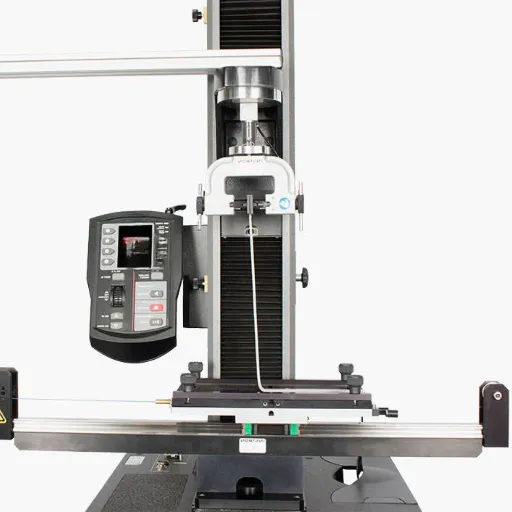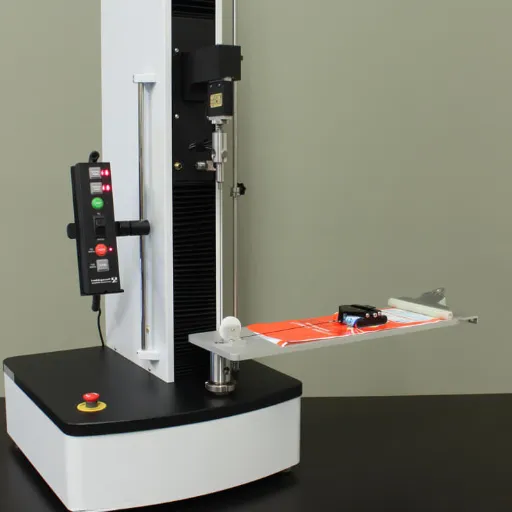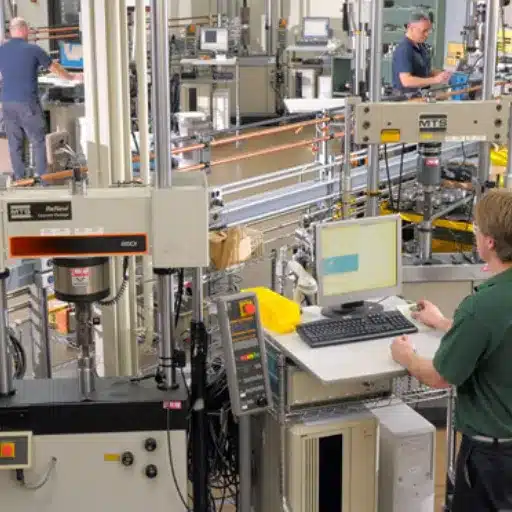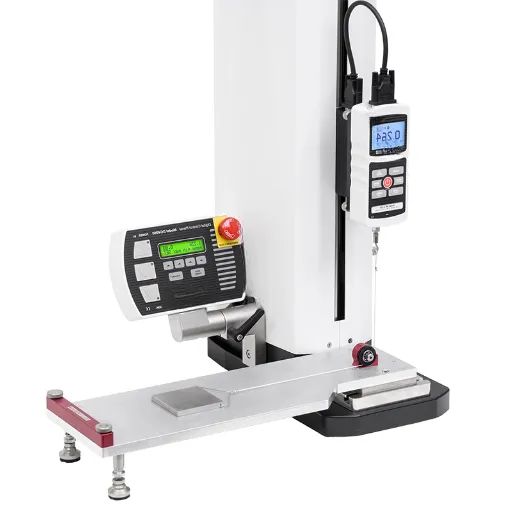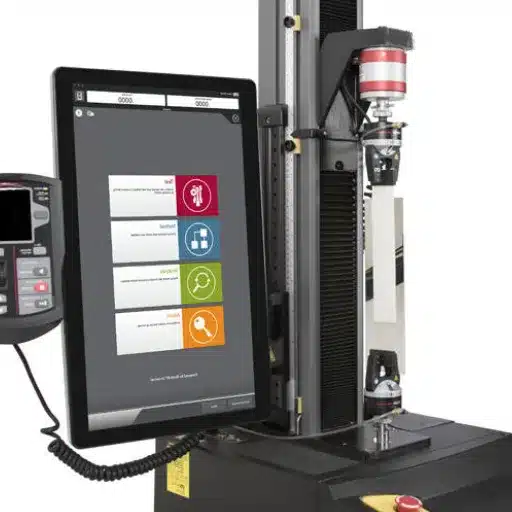The axial torsion test, a pivotal experimental procedure employed to assess the mechanical performance of materials under torsional loadings, presents a vital opportunity to understand the reinforcing, the tenacity, the elastic deformation of the said materials. It further delves into the concepts and the execution of the torsion test, spotlighting its broad usage in different sectors ranging from aircraft building to machine construction. This detailed review, whether as a person interested in materials, an engineer, or an individual who cares about the structural soundness of materials, chuck all the foundations in place and flesh out, the alalevel of the need for this axial torsion examination. In this process, you will appreciate why this technology is crucial in any renovation practice and most engineering projects that edify / edifies safety precautions.
Understanding the Axial Torsion Test
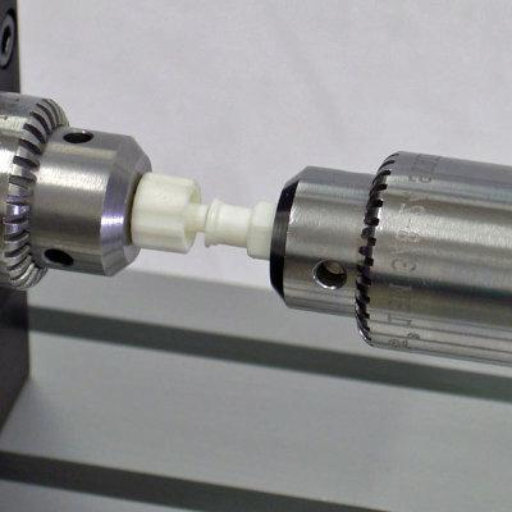
An axial torsion test examines how a material behaves mechanically under the action of a twisting force around its axis. It determines essential parameters related to shear, stiffness and elastisity, which are pivotal in the analysis of the material subjected to rotational stressor such as automotive hubs and three-way valves. In particular drive shafts, bolts or even medical devices require this testing in terms of finishing or longevity as well as performance. In such an experiment, the test specimen is twisted within a definite range that entirely grants the excess torque and its deformation noted for the purpose of quality control and more dependable usage in situations where it is required as the desirability.
Definition of Axial Torsion Test
An axial torsion test is a procedure which is applied to mechanical samples or components in an experimental setting for the assessment of the combined effect of axial and torsional induced forces. This test replicates complex environments where materials are put under twisting and intense tensile forces at the same time, which occurs in for instance structural or surgical implants, springs, or mechanical parts such as those in driveline systems. A compounded force is exerted or axial force and torque is applied to the object to assess such factors as shear stress, tensile strain, fatigue resistance and fracture limits in these cases.
According to the current technological improvements and facts, it is noticeable that during axial torsion testing, digital diagnostic technologies as well as high-resolution sensors are more and more often employed to increase the levels of efficiency as well as effectivity. To these ends, sectors such as biomedical and aerospace engineering among others, adapt their materials or make new products that are designed beyond operational extremes. The data provided by such modern-day axial torsion tests helps to mitigate such worries by ensuring greater predictability and facilitating better integration of newly emerging concepts, where the most critical criteria are safety, operability and comfort.
Significance of Torsion Testing in Material Performance
The torsion test is vital in elements evaluation when applying mechanical constraints such as rotation in materials mechanical properties. It explains various concepts in materials such as the modulus of rigidity, the yield point, tensile plasticity, and how it handles torsional forces. All these data is relevant when dealing with elements that involve rotation and twisting such as; drive shafts, spring and fasteners. By simulating these loads in a laboratory setting, torsion testing makes sure that the material suffices pre-established safety and service life requirements. Also, this procedure presents one step taken by engineers in their efforts to evaluate methods of production, spot failures, and take measures in ensuring that the purposes to be served will meet certain material requirements. Torsion testing which is employed for better developed technologies and products from automotive, aerospace industries retain their function and performance remains intact and standard where material science and components functioning are further advanced.
Key Differences Between Axial and Other Test Types
Axial testing primarily evaluates tensile and compressive forces along a single axis, while other test types, such as torsion, bending, or shear testing, measure material response to rotational or non-linear forces.
|
Parameter |
Axial Test |
Torsion Test |
Bending Test |
Shear Test |
|---|---|---|---|---|
|
Load Type |
Tensile/Compressive |
Rotational |
Angular |
Parallel |
|
Force Direction |
Linear |
Circular |
Flexural |
Sideways |
|
Stress Type |
Axial Stress |
Torsional Shear |
Bending Stress |
Shear Stress |
|
Primary Axis |
Single Axis |
Around Axis |
Across Axis |
Along Plane |
|
Material Property |
Strength, Ductility |
Shear Modulus |
Flexural Strength |
Shear Capacity |
|
Application |
Structural Testing |
Shaft Design |
Beam Analysis |
Fastener Evaluation |
Applications of Axial Torsion Tests in Various Industries
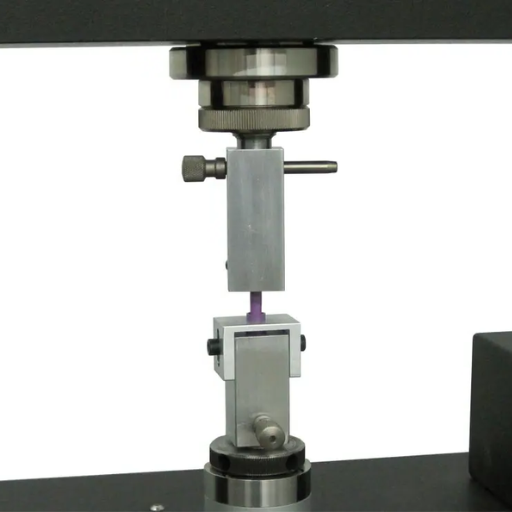
An axial torsion test is executed when materials are subjected to axial conditions and torsion simultaneously to check their correct behavior when such loads are applied. That is why the following sectors greatly rely on this test:
1.In aviation: Structural elements like the body and drive motors are analyzed by simulating operation conditions that act on them, trying to ensure materials are not placed under extra stress during their utilization.
2.Vehicle On Land (Automobiles): With axial torsion testing, drive trains, axles as well as the steering component and their derivation, are designed to ensure that they perform their best while also offering longevity against mechanical loads.
3.Construction: The behavior of rebars and nodes, when subjected to combinations of loads present in actual structures, is evaluated with the help of axial torsion tests.
4.Hydraulics: They assist in confirming the mechanical soundness of rotor shafts in turbines, pipes, as well as drill pipes, all of which are subjected to torsion and axial moments in activities of oil, gas, and renewable energy.
5.Healthcare: They evaluate the load bearing capacity of orthopedic devices and biomaterials under physiological stress conditions to guarantee their safety.
Therefore, in such high technology industries, the axial torsion test lies in its importance and flexibility in enabling the design and/or testing of materials and devices.
Aerospace Industry Applications
Axial torsion testing is very important in the aerospace industry as it helps verify that crucial components can withstand large mechanical forces without losing their structural reliability. This is especially true in systems in which twisting stresses are prevalent that many materials and fasteners are put together in which the performance of airframes, turbine engines, and spacecraft system components abides. These axial torsion tests, through talking different operating environments into consideration, are able to eliminate available deficiencies and improve component group minimizing mass and simultaneous improving the service life or torsion properties. The methods and the materials employed help to meet the requirements of the industry, and at the same time, enable new light and strong materials for the aviation sector to be developed.
Automotive Sector Testing Needs
The automotive sector has very stringent testing requirements for the components that are expected to perform under different adverse conditions. In this context, we emphasize on offering calibration of such factors as temperature, vibration, mechanical stresses in which the examination of the actual operation of the vehicle will be required. It is focused on the advanced testing of the materials, mainly those which cause fatigue and hence tensile stress and which are used in making key components such as suspension systems, drive shafts, and powertrain components with the aim of enhancing strength and reducing weight. These tests also help to meet the norms on the safety and the emissions in the industries and facilitate the development of the next generation technology which reduces the consumption of the fuel and increases the life of the vehicle.
Manufacturing and Medical Device Use Cases
The intersection of new generation material testing and precision manufacturing technologies has helped to enrich such areas as production and medical equipment without limitations. In this regard, they use numerous techniques for improving reliability and reducing costs, for example, FEA and NDT respectively. One instance of this would be the application of 3d printing technology that results in faster production of lighter but stronger parts for every sector from aerospace components to consumer products through material optimization. Consequently, the manufacturers meet certain standards despite circumstantial pressure.
Also, material testing is necessary for the medical device industry to facilitate adherence to the stringent laws of the region such as ISO 13485 and FDA. This is achieved by carrying out several mechanical and biocompatibility tests on medical devices, which include implants and surgical tools, to guarantee users’ safety as well as effectiveness. Further, the innovations like additive manufacturing and the use of bioresorbable materials have changed the manufacture procedure of such devices as has enabled the making of devices in complex shapes that are tailor-made to a patient, with high reliability and precision maintained. These examples together highlight the importance of material examination and engineering to progress in some spheres.
Equipment and Procedures in Axial Torsion Testing
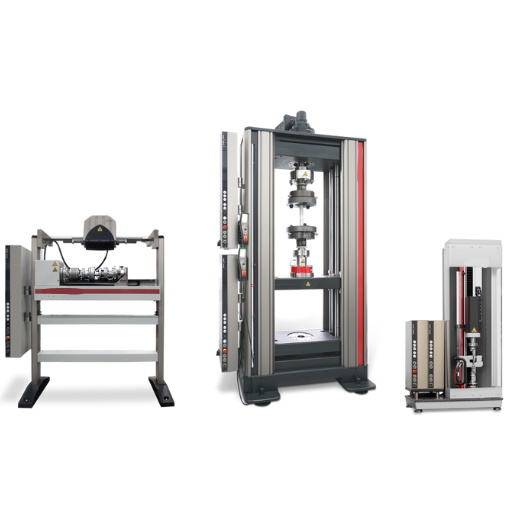
Devices and mechanisms for conducting axial torsion test are elements necessary to assess the ability of a material or structure to bear certain forced levels. The main device includes a torsion machine with a rigid loading frame, a rotation actuator and precision measuring systems for the moment. The grips or fixtures help to hold the specimens in place and prevent them from slipping when a force is being directed on them. Procedures aim, in most cases, to apply controlled angular movement or toque at certain speed and observe the corresponding shear stress and shear strain. Measurements are taken in real time allowing the determination of where to fail at, elasticity of the material’s range, or the level of fatigue strength in repetitive torsion. Reliable and consistent results are achieved through proper calibration and compliance with standard procedures such as ASTM and especially E143 for metals.
Common Torsion Test Machines Overview
A conventional torsion test machine is designed in such a way to apply the angular force on the samples and measure the response of materials to such loading conditions. Important models in the industry include servo-electrical and servo-hydraulic systems for control of angular motions, application of torque, and real-time acquisition of data. Systems in constant use that can be pointed out from the likes of these are Torque Testing Systems of Instron, Torsion Testing Machines of Tinius Olsen and TST Series of Mark-10 for their stability of performance and compliance with the testing norms. Usually, the systems are modular for functionality, there is a data analysis application or software and different types of grips and fixtures for the different geometries of samples and their respective axial torsion test needs.
Operational Steps for Performing a Torsion Test
1.Specimen Preparation: It is important to ensure that the right standards are adhered to during the preparation of the test specimen, which includes not only its correct dimensions but also surface finishes so as to mitigate any emission of stress concentrations.
2.Fixture Setup : Appropriate grips need to be chosen for the axial torsion test machine and they must be fixed properly. Ensure that the apparatus fits the specimen’s form and does not allow slippage or the development of particular stresses.
3.Machine Calibration: Set up the machines in table according to the manufacturer’s instructions for them to collect valid values of torque and angle changes. This involves zero readings for the force measurement devices and functionality of all other measuring devices.
4.Specimen Installation : One needs to install a specimen between the upper rotating and lower fixed grips. Ensure the specimen is positioned in a way that it will not be applied with loads off center or out of alignment.
5.Parameter Configuration : The test parameters are then entered into the machine software and include speeds, maximum torques, angles and data durations.
6.Pre-Test Inspection: Before the test is performed, this is the last inspection done, it looks at whether all the parts are properly installed, the guards on site, and everything is configured for the system to operate.
7.Test Execution: Turn on the control application so that the test can automatically be started. The machine will apply torque progressively on the specimen and at the same time log live data on torque, angle of twist and other pertinent parameters.
8.Monitoring: Carefully monitor the examination process ensuring that the machine functions and safe conditions allowed are maintained. Call off the test if quite disturbing factors such as vibrations and or slip occur.
9.Test Completion: Shut off the equipment either by letting it stop automatically or by manually stopping it as soon as the material or component tested reaches the failure point or predetermined displacement.
10.Post-Test Analysis: Remove and dispose of the test specimen cautiously out of the equipment. Look for any visible fracture on the broken piece and consider the results for the qualities of interest such as torsional deformability and modulus of rigidity.
11.Documentation and Reporting: All test results should be recorded and statistically processed with the help of available software tool. Produce graphs and if possible give a written description of the torque versus angle boosted also with material illustrations.
Industry Standards for Axial-Torsion Testing
In order to maintain the quality of the measurements axial torsion test standards have been drawn up to provide such specifications. Some of the most notable standards include ASTM E2207, which gives the guidelines for axial-torsion full cycle fatigue testing of metals. Such standard includes, among other factors, specimen handling and preparation as well as the capability of testing machines and the method of acquiring data. In addition to this, ISO 12111 offers an insight into how axial-torsion machines are calibrated and aligned in order to avoid imbalances that would be caused by misalignment and provide the same stress to all samples. Finally, ASTM E143 refers to how controlled uniaxial torsional loading on metallic elements, which is considered relevant only when examining relative twisting or shear of metals, is done. It is important that these standards are observed in order to achieve statistically significant results concerning the behavior of materials tested in complex loading modes.
Interpreting Results from Axial Torsion Tests
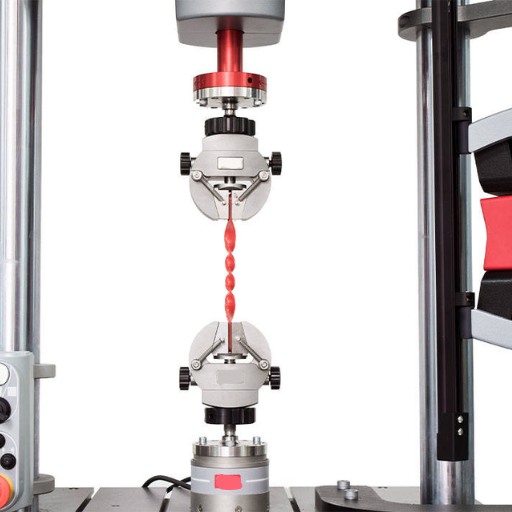
Analysis of results derived from an axial torsion test involves the use of parameters such as shear stress, strain, and the behavior of the material under the stated loads in the context of stress and strain. The shear stress in most cases is computed from the external torque application and the dimensions of the specimen. Shear strain is on the other hand computed as a function of the rotation. Analysis of the stress — strain curve presents the applicants of the material limit appropriate to the state analysis of yield points. In addition to this examining failure mechanisms such as torsional fatigue or brittle failure are useful failure mechanisms for examining performance evaluation of the material knowing that it is subjected to more than one kind of stress. Also, proper interpretations are not possible without following relevant testing standards that utilize the findings to result in the data.
Data Analysis Techniques for Test Results
With regard to the questions (concerning/pertaining to) data analysis techniques the response shall be guided by a routine or organized manner informed by best practices or standards applied in the industry. First, I make sure that all the raw data obtained from the test is first cleaned to remove any outliers and noise from it, with the aid of statistical packages such as mean centering or dividing by standard deviation modification. This makes the data perfect and useful. The second approach is employing graphical means like stress-strain graphs, fatigue graph curves and other means to interpret various parameters such as elastic modulus, yield strength and breaking points. This instantly conveys distinctive information and characteristics of materials under different circumstances. Finally, advanced numerical methods such as finite element models and multiple regression analyses are conducted to compare the empirical results of the tests to the anticipated behaviors, making the analysis more vigorous. These processes enable me to interpret the data and derive meaningful conclusions that are in accordance with the testing standards.
Indicators of Material Behavior Under Stress
A variety of parameters depict the stress-related behavior of a material and it includes responses to structural, mechanical and thermal conditions. Major components include stress and strain, yield power and toughness inheritance, tensile strength tattoo, ductility and toughness. It should be noted that all forces acting on a material cause deformation of the material, which is seen on the Stress – Strain curves and can further indicate viscoelastic and specific phase behavior for given materials. This is because yield strength is the stress value at the point of deviation of the material from its original shape, hence undergoing a plastic deformation, while UTS is the highest achievable stress without cracking. This is as against toughness which is the capacity of a metal to deform or stretch, then stop at a level where no fracture occurs as the section stretches further, which is commonly elongated in the normal course or by the percentage reduction in area or modulus of lateral expansion.
On top of this, there are also time dependent effects such as creep and stress relaxation which become evident especially under a loading action or elevation of temperature when it is significant. Creep may be defined as gradual change in shape of a body subjected to load while its dimensions are maintained, which is mainly the salient feature of metals and polymers subjected to high temperatures that are typical examples. Whereas, stress relaxation is the phenomenon of reduction in internal stress under a constant strain. To comprehend material performance under stress deforming especially during out of plane applications better, all these factors together with fracture mechanics aspects such as crack growth and fatigue build up a picture of interest. Cutting-edge analysis and computational simulation techniques are indispensable appendages to why and how these advanced objectives can be achieved through parts in most of these tests and evaluations.
Common Misinterpretations and How to Avoid Them
In terms of material behavior one common mistake is the oversimplification of the stress and axial strain relationship however, such a linearization is often conducted beyond the point of elasticity. While doing so I conduct stress-strain tests that extend to both the elastic as well as the plastic activities alongside the material to counter this. Another one is disregarding any environmental aspects such as the temperature, corrosion, and the rate of loading, yet these have drastically changed the ability of the material. I incorporate external environmental testing and simulation at the analysis stage to counter that. Finally, there is the issue of correctly applying for fracture mechanics applications which may otherwise result in the incorrect determination of the growth of cracks amongst other factors. To address this challenge, I utilize advanced numerical modeling techniques coupled with measurable efforts to predict material responses.
Innovations and Trends in Torsion Testing
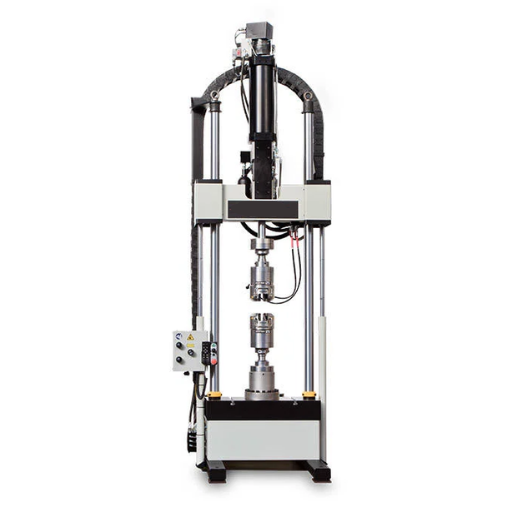
In recent years, torsion testing techniques have been modernized and upgraded by collagen of automation and advancement in electromechanical machinery for more precise and accurate functioning. Automated torsion testing technologies, with the presence of accurate sensors and data acquisition systems, ensure better precision and Reproduces measurements efficiently and accurately. Furthermore, Finite Element Modeling is being utilized more and more as well. It means that there is no more need for the physical tasks. To illustrate, the in silico approach to stretching out materials to examine their ability to withstand torsional strains enables qualitative research. trying to create an idea of the demand in the market and further assessing potential to develop composite materials with certain Marangoni effect inhibiting solution Based on these methods, the Materials Science and Engineering Department of any modern university teaches its students the detailed understanding of torsional loads.
Recent Advancements in Testing Equipment
The recent improvement of the equipment used in testing has contributed to the accuracy, speed and the level of information that can be obtained from the torsion tests greatly. The latest testing facilities are complete with automatic control mechanisms so that any changes in load or speed during the tests can be made in an instant while keeping the test conditions constant. Furthermore, the advanced sensors and data acquisition components integrate well to provide measurements of torque, rotation, and strain in various conditions. Also, in other cases, testing apparatuses come constructed of multiple components that are adaptable to various samples by changing components and certain operation procedures’. Furthermore, advances in contactless methods of strain and failure measurement, such as high resolution optics laser extendometry and digital image correlation, provide a great degree of angle deformations without any practically visible force changes. All this in sum allows the laboratories to smartly optimize their procedures to ensure highly precise and repetitive measurements in less time and with less effort.
Software Developments for Enhanced Analysis
Improvements in software for material research equipment have brought the ease and incidentally the accuracy of processing data to another level. The latest software packages even include machine learning techniques for forecasting material behavior and design of optimal testing procedures using past experiences. Also, connectivity with cloud technologies allows storing, sharing and processing big dta at once in real life, aiding experts with collaboration and access to information from anywhere. Modularity of the software also allows it to be customized in accordance with the nature of tests to be carried out like fatigue, tensile and thermal expansion testing. Automation reporting tools are also available to assist in preparing reports which are comprehensive but also customized to the recommended standards. These consequently foster growth by improving skills, increasing capabilities and speeding up the discovery in the fields of materials science and engineering as a whole.
Emerging Applications of Axial-Torsion Tests
In laboratory testing every year, there are more axial-torsion tests carried out in various sectors to represent more realistic in-field loading conditions. The example of aviation will suffice: such axial compression and shear stress tests are used for assessing durability and efficiency of new composite material structures. Similarly, medical engineers employ these tests in the case of medical devices such as stents and other prosthetics by building robots to move like a human body and then understanding the structures and how they behave under these loads. The design optimization of key components such as drive shafts and other suspension components is done using axial-torsion test in the automotive industry. Such efforts demonstrate how axial-torsion tests are being used ever more widely across discourses for the purposes of innovation, safety and reliability.
Reference Sources
-
TestResources: Axial Torsion Test – Covers applications in metals testing, biomechanics, tissue engineering, orthopedics, and composites testing.
-
Biopdi: Comprehensive Guide to Axial Torsion Test – Explains the mechanical testing process involving axial and torsional forces.
-
ADMET: Axial Torsion Test – Discusses examples like adhesive properties of biopolymers and mechanical properties of bone screws.
-
Instron: Axial-Torsion Testing – Details biaxial mechanical properties of materials under static and dynamic conditions.
-
MTS: Series 809 Axial/Torsional Test Systems – Describes versatile test systems for applying simultaneous axial and torsional loads.
Frequently Asked Questions (FAQs)
Q:Is there an axial torsion test that applies in these tests?
A:There is an axial torsion test, which is extensively used in numerous testing applications for measuring characteristics of materials for mechanical components. SimApprox mainly provides a rough estimate of maximum torque and the manner in which materials behave through different conditions of loading and; therefore, such testing has been applied in various sectors such as automotive industries and in medical equipment.
Q:Why do people make components to take axial and torsional loads together instead of considering only axial load?
A:Axial torsion testing is one of the most important methods for determining the behavior of materials in terms of internal strain in combined loading conditions. These tests will review how materials will sustain combined axial and torsional loads, which is studied in an application such as metallic screws and driving shafts.
Q:Are there any standard procedures for axial and torsional testing?
A:Yes, there are standard procedures for axial and torsional testing. These procedures ensure that the tests are carried out in a regulated and repeatable manner. In most cases, the procedures comprise of applying a known torque on the material test piece and measuring the angle of twist produced to gauge its capability against torsion taken up by the material under torsional loads.
Q:Do axial torsion tests also associate with function test of devices?
A:Yes, axial torsion tests can be associated with functional tests of devices, especially those that are expected to function while being subject to torsion loads. This is necessary in cases where components like driveshafts or other similar mechanical structures which undergo torsional stresses over centrifugal angular velocities need to be rendered with respect to functionality.
Q:What are the materials that use axial torsion testing?
A:Materials that use axial torsion testing are no more than metallic materials that have common application in medical devices, like metallic lasers for bone anchoring screws. Moreover, it is commonplace to perform compliance tests on, for example, steels and alloys for vehicle power trains to confirm that their properties do not deviate from standards that are identified.
Q:Are there any restraint systems that are used in axial torsion testing?
A:There are dynamic testing machines that are very instrumental in axial torsion testing because they help to recreate the actual loading conditions. The machines are capable of subjecting the materials under monotonic or cyclic loading enabling the performance of the materials to be tested under both static and fatigue conditions. This is very essential to ascertain that applications will not fail.
Q:How does failure testing relate to axial torsion tests?
A:Failure testing of axial torsion tests tends to be more practical as compared to other tests since it examines the capabilities of materials. In order to reduce the risk of failure in the developed products, engineers study the deployment of the material and the conditions that will lead to that point of material failure.
Q:Why is a vehicle’s weight a factor when designing the testing of axial torsion?
A:A vehicle’s weight factor incorporated into the design of axial torsion testing is when the engineers make adiabatic changes to attain a desired lightweight structure. This is made possible by fully understanding the behavior of such materials when subjected to torques which allows the manufacturers to take advantage of lightweight designs which help in cutting down on the weight of vehicles.

